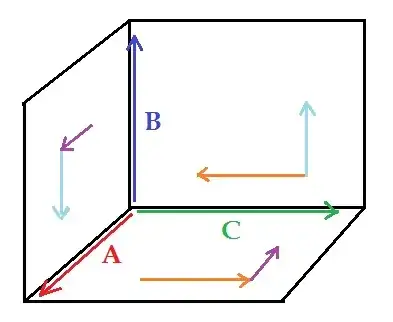Answering to Matthew Kvalheim. Let $R:\mathbb{R}^3\rightarrow \mathbb{R}^3$ be a rotation on $\mathbb{R}^3$ around a certain axis. Then $(R\vec{a}\times R\vec{b})=R(\vec{a}\times\vec{b})$. From here and the definition of the map $\vec{T}$ we have that
$$
\vec{T}(R\vec{a},R\vec{b},R\vec{c})=R\vec{T}(\vec{a},\vec{b},\vec{c}).
$$
From the expression in terms of $\vec{p}$ of the map $\vec{T}$ and the fact that $[R\vec{a},R\vec{b},R\vec{c}]=[\vec{a},\vec{b},\vec{c}]$, one obtains
$$
\vec{T}(R\vec{a},R\vec{b},R\vec{c})=[R\vec{a},R\vec{b},R\vec{c}]\vec{p}=[\vec{a},\vec{b},\vec{c}]\vec{p}=\vec{T}(\vec{a},\vec{b},\vec{c}).
$$
Comparing the above expressions, we obtain that
$$
R\vec{T}(\vec{a},\vec{b},\vec{c})=\vec{T}(\vec{a},\vec{b},\vec{c})
$$
for every $R$, which means that $\vec{T}(\vec{a},\vec{b},\vec{c})=0$ for arbitrary $\vec{a},\vec{b},\vec{c}$ and $\vec{p}=0$ always.
